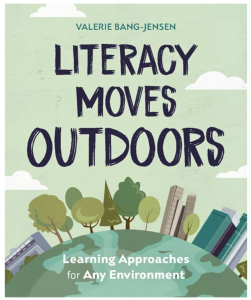Initial assessment is an area of public education that doesn’t get a lot of attention, and yet it is a critical step in the journey of newcomer students in Ontario. In this post, I hope to help educators become more familiar with his important process.
What is Initial Assessment?
Initial assessment is the intake process that occurs when students enter Ontario schools from outside of the province. The process of initial assessment has been established by the Ministry of Education in several documents, and Ontario educators can find these resources in the EDU resources area of Brightspace.
During the initial assessment process, newcomer families are interviewed by school or board staff to gather information about the child, and any background information relevant to their schooling. For example, if a child has a diagnosis or assessment related to special education, the family could share these documents so the appropriate supports may be put in place.
Educators then work with students to complete an initial oral communication, literacy, and mathematics assessment. The information gathered at this assessment is used to place students on the Initial Assessment STEP Continua, which offers the educator team at the student’s school a snapshot of their English language proficiency. A summary of core numeracy skills are also documented as an assessment for teaching resource.
Why is the Initial Assessment Process so Important?
The initial assessment process is important for a variety of reasons. Let’s take a closer look at these reasons next.
Initial Assessment Supports Student Transitions
Starting a new school in a new country or province can be one of the most life changing experiences for children and their families. The initial assessment process provides schools and boards with an opportunity to welcome families, share valuable information about the Ontario education system, and help them to feel more at ease in a new environment.
Through the initial assessment process, families also have a space to share their child’s interests, strengths, areas of need, and any cultural or background information that can inform placement and programming. We will explore the value of receiving student background information next.
Background Information Helps Educators and Families Plan Programming and Student Pathways
Newcomer students arrive in schools with a variety of background experiences that can have significant impacts on their learning and overall well-being. They may have been through traumatic experiences, family separation, or long periods of interrupted schooling. They may be coming from under resourced schools and regions, private schools, international schools, or home schooling.
Having information about the previous schooling experiences of newcomer students and the journey they have been on prior to arriving in Ontario helps educators and families to collaborate and plan educational pathways for students. For example, the teaching team at the receiving school may offer ELD (English Literacy Development) program adaptations to help build the student’s foundational numeracy and literacy. Referrals to community services may also be made, which helps families to settle into a new environment.
Initial Assessment Helps to Put Appropriate Program Supports in Place
A fulsome initial assessment process helps to ensure that students receive the right program accommodations or modifications. You might think of initial assessment as a quick snapshot of a new student, which gives you a sense of what to expect when they enter the classroom. Beyond placing students on the Steps to English Proficiency (STEP) continua, the assessment can help educators to broadly understand where they might need more support or additional scaffolding.
For example, many multilingual students arrive in Ontario schools with different levels of literacy in their home languages. Having an understanding of what they can do in terms of written or spoken output indicate which skills the student will transfer into English over time. If the assessment shows the student is an emergent speaker of English, then the educator can modify learning expectations accordingly.
Who Administers the Initial Assessment in Elementary Schools?
In Ontario, the initial assessment process can be administered by any teacher. Some boards have educators in an assessor role, others have an itinerant that visit schools, and in other boards a school support teacher may administer it.
Classroom teachers may also do an initial assessment, or place the student after they have had time to gather sufficient observations of the student’s language and literacy behaviours.
Where Can I Learn More About Initial Assessment in My School Board?
Every school board has developed their own processes for initial assessment, and may have their own resources for completing the task. To learn more about the initial assessment process in your board, reach out to the ESL/ELD support staff in your board or school.


